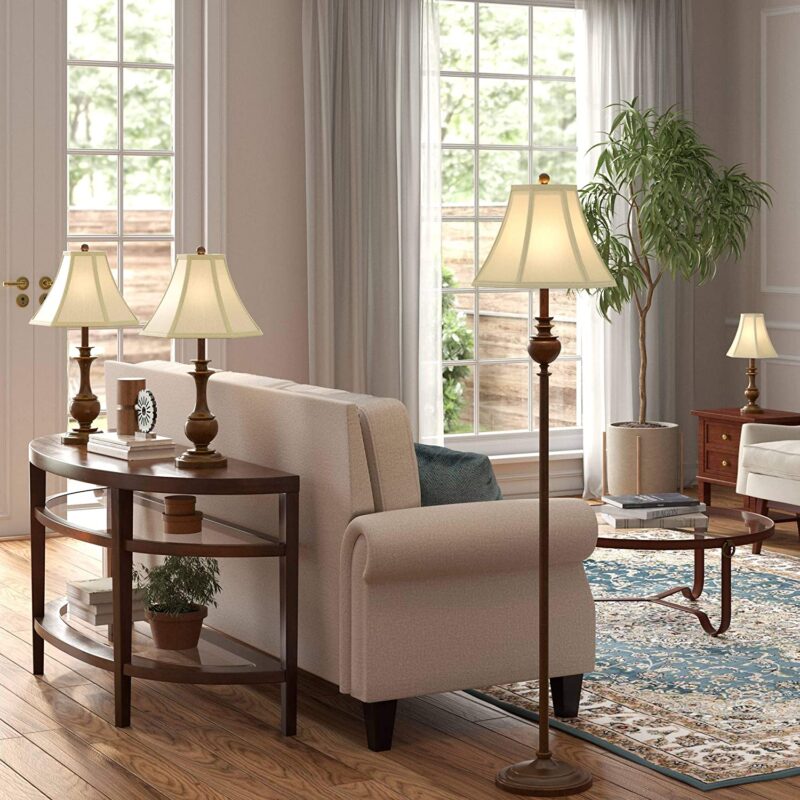Tips for Buying Chandeliers

The lighting from a chandelier, no matter what the setting, should make a room and everything in it feel lively, comfortable, and at its best. As such, there are oftentimes things overlooked when buying a chandelier. For starters, the size; if the chandelier is too large to fit, the room will appear too cluttered. If the chandelier is too small, it will create little to no effect. The positioning in a room also plays a factor.
A chandelier in a dining room setting should be positioned in the center of the dining table and room proportions. Avoid chandeliers that are larger than the width of your table, as it may be bumped around or in the way when people get up or move around. A chandelier should be 12 inches narrower than a table and have at least 48 inches of space from each of the room walls or edges.
The Chandelier should hang approximately 30 to 34 inches over a table with an 8 foot ceiling height. If your ceiling is higher than 8 feet, mount the chandelier an additional 3 inches higher for each foot of ceiling.
In an open lobby or larger foyer setting, an entryway chandelier can provide an important transition from outdoor to interior spaces and set the mood for your entire home. Hang the chandelier high enough to illuminate stairways or side passages; about knee-level of the upstairs landing is a good standard.
Chandeliers in a lobby setting can be wider or taller than dining room pieces so that they comfortably fill a space without appearing too small. You should also allow for at least 6 1/2 feet of clearance from the floor.
Pendant chandeliers for kitchen islands and dinette tables demand a little different approach. Depending on their arrangement and number, position the pendant 30″ to 34″ inches up from the table surface.
Use cord covers to dress up the hanging wire or chain of a chandelier by covering it in a narrow sleeve of fabric. Fabric should be three times longer than the chain to achieve a gathered appearance. This is great for festive holiday ideas! Click here, to see some available cord covers.
Chandelier Bulbs
Lighting from a chandelier beams directly onto a person from above and can potentially cast facial shadows. The certain bulbs can also generate enough heat to make the room uncomfortable. High wattage bulbs increase the heat and can cause unnecessary glares on tables and other furniture.
Adding shades to candelabra bulbs, or wall dimmers, can help to control the lighting and heat to make a more comfortable and welcoming setting. When a chandelier has no central downlight, you can enhance the dining room table setting and centerpiece by using Recessed adjustable fixtures with narrow beam bulbs. Aim these bulbs at a dining table centerpiece to create additional visual interest in conjunction with the chandelier.


 Basic Shades
Basic Shades
 6-way
6-way
 Bell
Bell
 Drum
Drum
 Empire
Empire
 Hexagon
Hexagon
 Oval
Oval
 Rectangle
Rectangle
 Round
Round




 Floating Canvas Frames
Floating Canvas Frames
 Handcrafted Lamps
Handcrafted Lamps
 Picture Lights
Picture Lights
 Wall Lamps
Wall Lamps